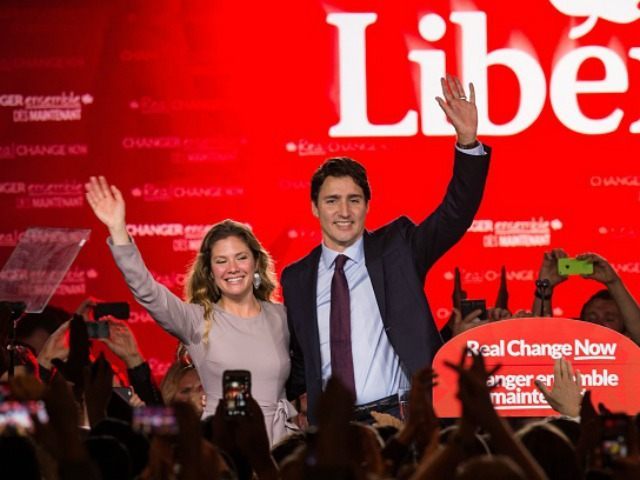The elections in Canada Monday ended almost 10 years of rule by the Conservative Party and delivered a broad majority to the centrist Liberal Party.
The more interesting story, however, for American political observers is the utter collapse of the hard-left New Democrat Party (NDP). That party, which was the second largest block in Canada’s parliament before Monday, last more than half its seats.
In Quebec, the country’s second largest province, the NDP was virtually wiped away, falling from about 60 seats in parliament to around 10 today. The center-left Liberal Party vacuumed up most of the NDP’s losses. Despite their losses nationally, Conservatives actually picked up some seats in the French-speaking province.
The election obviously turned on issues unique to Canada. The Conservatives had been in power for almost 10 years and faced an electorate itching for change. The Liberal Party leader, Justin Trudeau, is the young, charismatic son of Pierre Trudeau, a revered politicians in Canada who served as Prime Minister for decades. Under Trudeau, the Liberal Party ran on an optimistic campaign message, underlined by moderate policy positions.
Trudeau, for example, campaigned on cutting taxes for middle class voters while supporting modest increases for the wealthiest Canadians. Trudeau supports construction of the Keystone pipeline and additional pipelines to refineries in eastern Canada, but rhetorically committed his party to more action on climate change.
The Liberals campaigned on ending Canada’s military involvement in Iraq and the airstrikes against ISIS in the Middle East, while also advocating strengthening the military through more training and better resources.
The Liberals support deficit spending to invest in infrastructure, but this is tempered by the fact that the Liberals have been fairly hawkish stewards of the fiscal budget. It was the last Liberal government, in fact, that balanced the federal budget just over 10 years ago. Deficit spending on infrastructure is not, in itself, fiscally irresponsible. Borrowing money to pay entitlements, however, certainly is irresponsible.
While it remains to be seen how successful Trudeau is in threading these policies needles, the Liberal campaign stands in stark contrast to the populist, class-warfare rhetoric of the NDP party.
The platform of the NDP, in fact, reads like a campaign plan of the modern-day Democrat party. The rhetoric is long on attacking corporations and CEOs and calls for large tax hikes on these, redistributing to other Canadians.
NDP campaigned aggressively on making college more affordable by easing student loan burdens, expanding government entitlement to childcare and increasing spending on health care.
It ran on aggressive action on environmental issues, including support for a carbon tax and increased fines and levies on polluters. It promoted strict regulations to combat climate change. The NDP put a premium on outreach and advocacy for Canada’s native population.
In many ways, Tom Mulcair, leader of the NDP, would have been perfectly at home on last week’s Democrat debate stage in Las Vegas. His was a rhetoric of defeatist austerity, advocating different ways of carving up an existing set of resources. His campaign was cynical, trying to exploit voters’ fears that other, primarily wealthy, Canadians were unfairly claiming too many resources for themselves.
The NDP, in other words, lurched far to the left for Monday’s election. It was outmaneuvered by a more moderate Liberal Party and was decimated as a result.
The American Democrat Party, through Sen. Bernie Sanders and Hillary Clinton, has also banked its fortunes on a strong progressive policy platform, like the NDP. If that platform was too much for Canadian voters, it is unlikely to fare better south of the border.

COMMENTS
Please let us know if you're having issues with commenting.